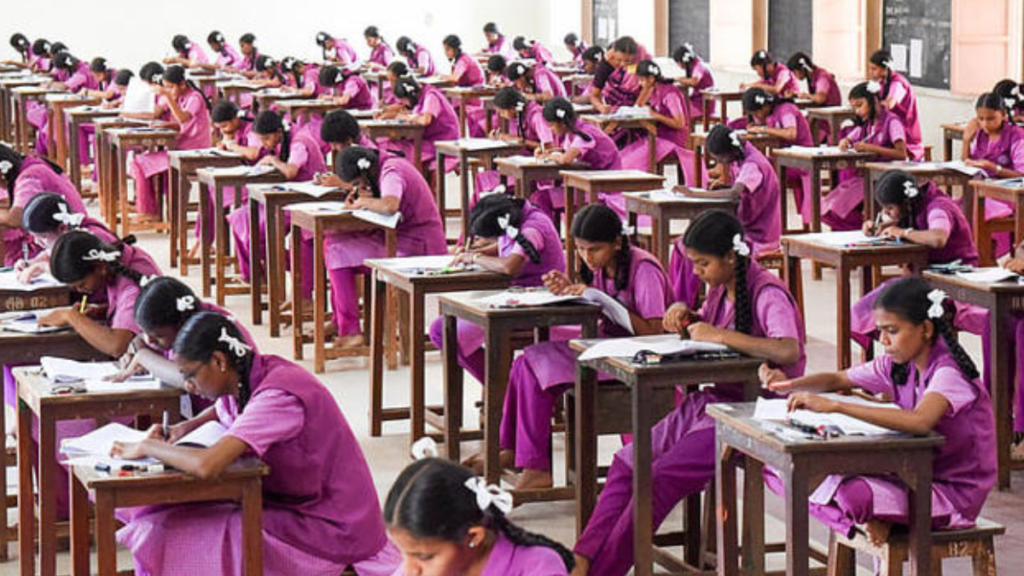Common Board has been recommended by the Ministry of Education for Classes 10 and 12 in seven states following a worrying analysis of student performance. The states in question—Andhra Pradesh, Assam, Kerala, Manipur, Odisha, Telangana and West Bengal—accounted for a staggering 66 percent of all student failures in 2024, raising serious concerns about disparities in school education systems.
Officials from the School Education Department pointed out that these failures are often linked to inconsistent curricula, varying assessment methods, and lack of standardisation across the many school boards in India. The recommendation, therefore, aims to bring about a more unified and transparent system to improve academic outcomes and ease the schooling process.
Over 40 Lakh Students Failed in 2024 Board Exams
Data from 2024 revealed that more than 22.17 lakh students failed in Class 10, while 20.16 lakh could not clear Class 12. While this is a slight improvement compared to previous years, the numbers still represent a significant roadblock to student progress and access to higher education.
“There are 66 school examination boards in the country—3 at the national level and 63 at the state level,” said Sanjay Kumar, School Education Secretary. “Of these, the top 33 boards cover 97 percent of students, while the remaining 33 serve only 3 percent. A common board is the logical step forward.”

Standardisation of Education Processes Needed
The ministry has pointed out several gaps across states in terms of syllabus, exam design, evaluation, and even promotion criteria. These differences not only affect performance but also create unequal educational experiences across regions. Kumar emphasised the need to align the assessment processes and curricula so that students from all parts of the country are evaluated fairly and consistently.
He also highlighted the potential of the National Institute of Open Schooling (NIOS) in bridging the gap. Currently more active in states like Delhi, Haryana and Rajasthan, where failure rates are lower, NIOS could play a critical role in re-engaging students who did not pass the board exams in these seven states.
Girls Leading the Way in Science Stream
One of the positive trends in this year’s education data is the performance of girl students. Girls not only outperformed boys across most school boards but also made a clear shift towards science subjects. More than 28 lakh girls passed in science this year—up from 23.3 lakh in 2022—overtaking the number of girls in arts. This reversal of past trends marks a strong step forward in gender parity in education, especially in STEM fields.
Language and Regional Gaps Persist
The analysis also showed that students writing exams in Odia and Malayalam had better outcomes compared to those using Kannada, Telugu or Assamese. This highlights underlying regional and linguistic disparities that still need addressing. Despite being among the seven states flagged for adopting a common board, Kerala, Odisha and Manipur actually recorded some of the highest pass percentages—Kerala reaching as high as 99.96 percent.
These numbers suggest that while some of these states already have integrated board systems, uniform national-level guidance could further strengthen academic performance and bridge existing gaps.
Navodaya and Kendriya Vidyalayas Shine
Students from centrally-run schools like Navodaya Vidyalayas (NVs) and Kendriya Vidyalayas (KVs) continued to perform exceptionally well. NVs, which are fully residential schools mostly for rural students, saw 72 percent of their students clear NEET-UG. Both NVs and KVs also did well in engineering entrance exams, showing the impact of quality infrastructure, consistent academic standards and student support.
Conclusion: A Bold Push for Uniformity and Inclusion
The Ministry’s push for a common board across high-failure states is a move toward reducing educational inequality and ensuring better academic outcomes. By aligning curriculums and standardising evaluation, the goal is to help more students stay in school, succeed in board exams, and smoothly transition to higher education or vocational paths.
With support from institutions like NIOS, reforms under the Samagra Shiksha Abhiyan, and success stories from NVs and KVs, India could be moving closer to a more equitable, unified school education system that works for every student—regardless of state or language.
ALSO READ
Placement Process Clarified by IIM Kashipur Amid Viral Controversy
IIT Delhi Tops India in QS World Rankings 2026, Beats IIT Bombay
RSOS Result 2025 OUT Live: Rajasthan 10th, 12th open school results declared